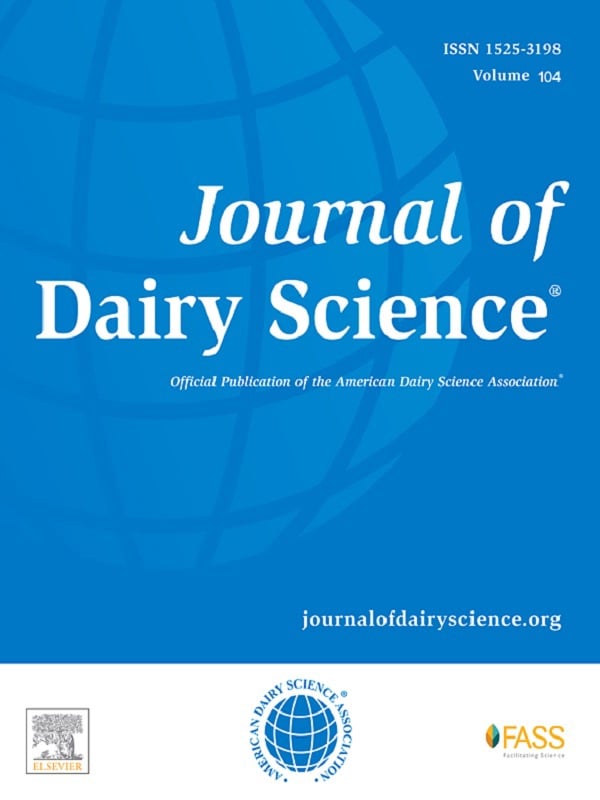Total-tract digestibility and milk productivity of dairy cows as affected by trace mineral sources
J. Dairy Sci. 103:9081–9089

Abstract
The chemical characteristics associated with different sources of Cu, Zn, and Mn such as sulfate, hydroxychloride, or organic chelate may affect the interaction between the metals and other components present within the gut of a ruminant (i.e., microorganisms and nutrients). The present study aimed to evaluate the effect of different supplemental trace mineral strategies on apparent total-tract digestibility, rumen fermentation, and dairy productivity. Using 52 Holstein cows in a replicated 4 × 4 Latin square design with periods of 21 d, 4 treatments differing in their sources of Cu, Zn, and Mn were tested: sulfate form, hydroxychloride form, a mix of sulfate and organic chelate forms (70 and 30%, respectively), and a mix of hydroxychloride and organic chelate forms (70 and 30%, respectively). Treatments were formulated to provide 15, 40, and 20 mg of supplemental Cu, Zn, and Mn, respectively, per kilogram of dry matter. This level of supplementation, together with the basal level present in forages and feed ingredients, resulted in a total average supply of 19, 79, and 84 mg of Cu, Zn, and Mn, respectively, per kilogram of dry matter. Cows had ad libitum access to a total mixed ration, which provided 15.3% of crude protein, 21.7% of starch, and 35.3% of neutral detergent fiber (NDF). Data were summarized by period with trace minerals and period as fixed effects and the repeated cow as random effect using the MIXED procedure of SAS (SAS Institute Inc., Cary, NC). Apparent total-tract NDF and crude protein digestibility was reduced (−0.8% and −1.0%, respectively) when organic chelate trace minerals were fed, whereas apparent total-tract NDF digestibility was improved (+0.8%) when sulfate trace minerals were replaced by hydroxychloride trace minerals. Cows supplemented with the hydroxychloride source had lower ruminal butyric acid concentration compared with cows fed sulfate trace minerals (13.3 vs. 14.6%). In addition, fat- and protein-corrected milk and milk fat yields were improved (+1.0 kg/d and +51 g/d, respectively) in multiparous cows when trace minerals were supplemented as hydroxychloride compared with sulfate. These effects were not observed in primiparous cows. These results confirm that trace mineral sources affect apparent total-tract digestibility and indicate that milk productivity may also be affected.